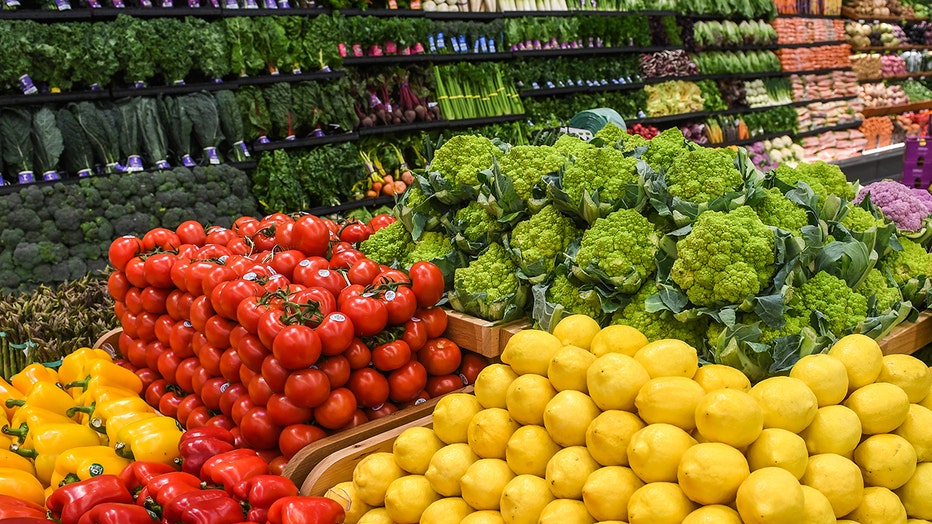This food has ‘alarmingly high’ level of pesticides, report finds
Kale, strawberries, spinach top ‘Dirty Dozen’ list for pesticide contamination
Kale, the popular vegetable that serves as a staple in "clean eating" meal plans just made it onto the Environmental Wellness Group’s annual ranking of the most pesticide-ridden fruits and vegetables, otherwise known as the "Dirty Dozen."
A recent investigation by Consumer Reports has found that some fresh and frozen fruits and vegetables are contaminated with a high level of pesticides.
The analysis, which draws on seven years of data from the Department of Agriculture's testing of both conventional and organic produce, found that some of the highest levels of pesticides were found in produce imported into the United States.
The organization looked at 59 common fruits and vegetables, including, in some cases, not just fresh versions but also canned, dried, or frozen ones.
They found that pesticides posed significant risks in 20% of the foods examined, with seven foods having a "very high risk" of pesticides.

Vegetables are stacked neatly inside a produce area of grocery store.(Credit: Steve Pfost/Newsday RM via Getty Images)
"Consumer Reports, which has tracked the use of pesticides on produce for decades, has seen this pattern repeat itself over and over. "It’s two steps forward and one step back – and sometimes even two steps back," James E. Rogers, Ph.D., who oversees food safety at the company, said.
Green beans have ‘alarmingly high’ pesticide levels
The report found that imported green beans to be the only organic vegetable with a very high risk of pesticides.
Green beans had residues of a pesticide that has been prohibited to be used on the vegetable in the U.S. for over a decade. And imported produce, especially some from Mexico, was particularly likely to carry risky levels of pesticide residues.
The pesticide found on green beans is called acephate or one of its breakdown products, methamidophos. Only 4% of conventional, domestic green bean samples were positive for one or both – but their pesticide levels were often "alarmingly high."
In one sample from 2022, methamidophos levels were more than 100 times the level Consumer Reports scientists consider safe; in another, acephate levels were 7 times higher.
New research finds some people genetically wired to hate the taste of vegetables
Most parents are aware that it has traditionally been considered difficult to get children to eat their vegetables, but a new study has found that some children really aren’t just being stubborn — it could be in their genes.
The organization said this is especially troubling because neither chemical should be on green beans at all, since growers in the U.S. haven’t been allowed to use acephate on green beans since 2011, and methamidophos to all food since 2009.
Rogers said if you grab a handful of green beans at the grocery store, your chance of getting one with risky pesticide levels may be relatively low, but added, "But, if you do, you could get a much higher dose than you should, and if you eat the food often, the chances increase."
A spokesperson for the Food and Drug Administration told Consumer Reports that the agency is aware of the problem of acephate contamination on green beans from Mexico. Between 2017 and 2024, the agency has issued import alerts on 14 Mexican companies because of acephate found on green beans. These alerts allow the FDA to detain the firms’ food shipments until they can prove the foods are not contaminated with the illegal pesticide residues in question.
Other foods with highest risk of pesticides
Overall, imported fruits and vegetables and those grown domestically were pretty comparable, with roughly an equal number of them posing a moderate or worse pesticide risk. But imports, particularly from Mexico, can be especially risky, the research found.
Imported blueberries, celery, collard greens, green beans, potatoes, fresh and frozen strawberries landed in the "very high risk" category.
RELATED: Produce pesticides: Report details the cleanest and dirtiest fruits, vegetables
Meanwhile, U.S. grown fresh and frozen blueberries, bell peppers and potatoes had a very high risk, as well.
Pesticides presented little to no concern in nearly two-thirds of the foods, including nearly all of the organic ones.
Pesticides and your health
Consumer Reports said that children and pregnant people should consume less than a serving a day of high-risk fruits and vegetables, and less than half a serving per day of very high-risk ones. Everyone else should limit consumption of those foods, too.
RELATED: ‘Dirty Dozen’ produce: Strawberries, spinach top 2024 list for most pesticides
Rogers continued, "Clearly, the safeguards aren’t working as they are supposed to." As a result, "consumers are being exposed to much higher levels of very dangerous pesticides than they should." Because of those risks, he suggests checking packaging on green beans and strawberries for the country of origin, and consider other sources, including organic.
According to the National Pesticide Information Center, cleaning fruits and vegetables before eating does reduce pesticide levels, but there is "no method of washing produce that is 100% effective for removing all pesticide residues."

